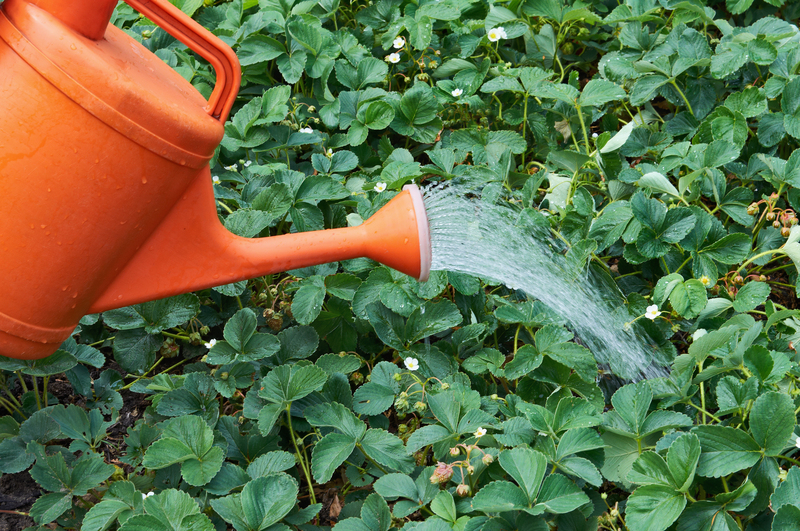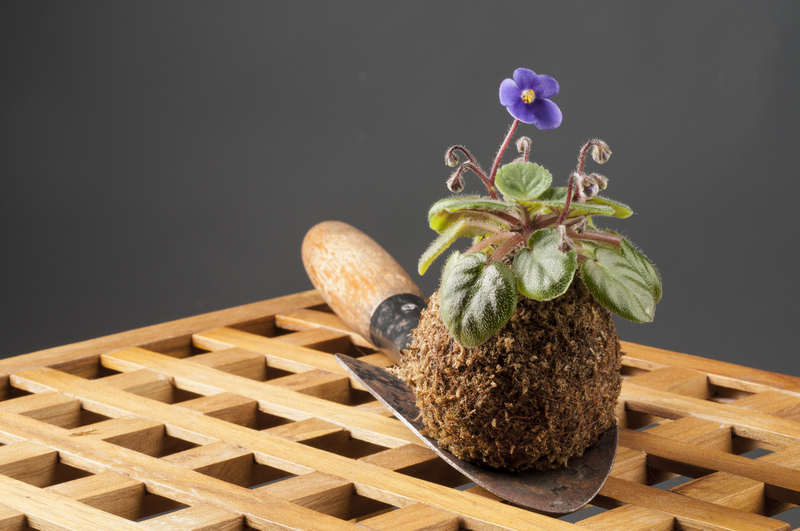Cultivating Fun and Safety in a Children's Garden
Posted on 24/09/2025
Cultivating Fun and Safety in a Children's Garden
Cultivating a children's garden offers endless opportunities for playful learning, exploration, and family bonding. However, ensuring a secure and enjoyable environment is key to fostering a love for nature that will last a lifetime. This comprehensive guide provides ideas and tips for creating a fun and safe children's garden, including plant selection, engaging activities, and essential safety considerations.
Why Have a Dedicated Children's Garden?
Children's gardens are more than just play areas with plants. They are immersive environments where curiosity turns into knowledge, and energy is channeled into creative outdoor activities. A thoughtfully designed kids' garden can:
- Encourage physical activity as children dig, plant, and water.
- Boost cognitive development by exposing kids to science, math, and art concepts through nature.
- Promote emotional well-being by reducing stress and fostering mindfulness.
- Teach responsibility as children care for living things.
- Enhance social skills through collaborative gardening and play.

Designing a Kid-Friendly and Safe Garden
Creating a safe environment in a children's garden is crucial. The right design blends joyful play with secure boundaries, ensuring children can explore freely without unnecessary risks.
Site Selection and Preparation
- Visibility: Choose a spot easily seen from the house or adult sitting areas so supervision is convenient.
- Sunlight: Ensure there is adequate sunlight for healthy plant growth, while providing shaded areas to prevent sunburn.
- Safe Surfaces: Use grass, rubber mats, mulch, or sand instead of hard concrete to cushion falls and reduce injuries.
- Pathways: Install clear, slip-resistant paths so children can navigate without tripping or getting lost in the undergrowth.
- Fencing: Secure your children's garden with a fence or natural hedges to keep children in and animals out.
Choosing Safe and Engaging Materials
- Non-toxic Materials: Opt for non-toxic paints, finishes, and containers for raised beds, signs, and garden artwork.
- Tool Size: Provide child-sized, blunt-edged tools made from sturdy, lightweight materials.
- Furniture: Include stable benches, picnic tables, and easy-to-clean surfaces at child-appropriate heights.
- Storage: Designate a safe storage place for tools, fertilizers, and other supplies, out of children's reach.
Occupying Young Gardeners: Fun Activities and Projects
Infusing fun in a children's garden keeps kids engaged and eager to participate. Creative, hands-on activities make gardening enjoyable and educational, building cherished memories in the process.
Interactive Planting Activities
- Grow a Rainbow: Plant flowers and vegetables in rainbow colors. Teach kids the colors and plant names as the garden brightens through the seasons.
- Mini Herb Garden: Assign each child a pot or small plot for their choice of herbs--let them sniff, pick, and taste!
- Bean Teepees: Use bamboo poles and climbing beans to create living play tents, offering a shady retreat and snack on fresh pods.
- Vegetable Mazes: Plant a simple maze with sunflowers, corn, or tall grasses for hours of exploration and hide-and-seek.
Nurturing Wildlife Habitats
- Butterfly and Bee Gardens: Plant nectar-rich flowers like lavender and coneflower to attract pollinators. Observe their busy activity with magnifying glasses.
- Bird Feeders and Baths: Involve kids in crafting or decorating feeders and regularly refilling them. Keep birdbaths shallow and change the water often.
- Bug Hotels: Stack sticks, reeds, pinecones, and old bricks in a corner to attract friendly insects, turning kids into nature detectives.
Art Projects for the Garden
- Painted Stones: Invite creative expression by painting stones as markers or garden decorations.
- Wind Chimes and Mobiles: Assemble crafts from recycled materials, shells, or sticks for musical, whimsical touches.
- Garden Signs: Personalize plant markers or welcome signs using weather-proof paints and handprints.
Plant Selection for Safety and Fun
Choosing the right plants is essential for child-friendly gardening. Select varieties that are safe to touch, taste, and explore, while avoiding toxic or hazardous species.
Safe Plant Choices
- Edible Plants: Cherry tomatoes, strawberries, snap peas, carrots, and herbs like basil and mint--great for snacking while exploring!
- Sensory Plants: Lamb's ear for its soft leaves, lemon balm for scent, and nasturtiums for brightly colored, edible flowers.
- Fast Growers: Radishes, sunflowers, and lettuce offer quick results to keep little gardeners motivated.
- Low-Allergen Plants: Choose plants that don't cause rashes or aggravate allergies, such as marigolds and zinnias.
Plants to Avoid in a Children's Garden
- Poisonous Species: Steer clear of foxglove, oleander, lily-of-the-valley, and castor bean, as their toxins can be harmful if ingested.
- Prickly Plants: Skip roses, barberry, and cactus to minimize scratches and pokes.
- Allergen or Irritant Producers: Avoid poison ivy, stinging nettle, or plants with irritating saps.
Tip: Always supervise young children and teach them not to taste or touch unknown plants.
Essential Safety Guidelines for a Children's Garden
Creating a safe environment in a children's garden is an ongoing process. Here are the most crucial steps and ongoing measures to keep kids protected:
- Check for Hazards: Routinely inspect the garden for sharp objects, harmful insects, or loose fixtures.
- Avoid Chemicals: Use organic compost and natural pest control methods instead of pesticides or chemical fertilizers.
- Sun Protection: Dress children in hats and protect delicate skin with sunscreen, especially during peak sun hours.
- Hydration: Keep water bottles on hand, encouraging children to drink frequently.
- Safe Water Features: Any pond or water play area should be shallow and supervised, or covered when not in use.
- Teach Safety Rules: Go over garden safety, the proper use of tools, and the importance of hand washing after gardening.
- First Aid: Keep a stocked first-aid kit within easy reach whenever children are gardening.
Encouraging Learning Through Garden Play
A high-quality children's garden invites open-ended discovery and learning. Blend play and education seamlessly to help children develop a sense of wonder and knowledge about the natural world.
Learning Activities and Games
- Garden Journals: Have kids track plant growth, draw or photograph changes, and record weather patterns.
- Nature Scavenger Hunts: Create lists of leaves, insects, rocks, and flowers to find and identify.
- Counting and Sorting: Use harvested seeds, petals, or produce for early math activities.
- Storytime in the Garden: Read nature-themed books or make up stories inspired by insects and plants.
- Science Experiments: Demonstrate photosynthesis, water cycles, or composting through practical, child-friendly demonstrations.
Adapting the Garden for All Ages and Abilities
The best children's gardens are inclusive spaces where every child can participate and thrive. Adjust your garden design and activities to suit different age groups and abilities.
- Toddler Areas: Raised beds for easy access, sand pits, and wide paths for safe crawling and toddling.
- Accessible Features: Wide, even paths, sensory gardens, and raised containers accommodate children with mobility challenges.
- Challenge Zones: Obstacle courses made from logs, stepping stones, or balance beams for older kids seeking adventure.
Encouraging Family and Community Involvement
- Family Garden Days: Invite parents and siblings to join in planting, watering, and harvesting activities.
- Community Projects: Create shared gardens with neighbors or schools, fostering teamwork and a sense of belonging.
- Garden Clubs: Organize after-school or weekend clubs for ongoing projects, from butterfly monitoring to vegetable competitions.

Maintenance and Ongoing Care
A children's garden is an evolving space that benefits from regular care and refreshing activities. Simple routines and shared responsibilities help keep the garden vibrant and enjoyable.
- Watering Routines: Assign daily or weekly watering tasks, explaining how much and when to water different plants.
- Weeding and Mulching: Make a game of pulling weeds and spreading mulch to protect roots and conserve moisture.
- Harvest Celebrations: Mark the end of each season with a garden picnic or cooking session using harvested crops.
Conclusion: Cultivating a Lifetime of Fun and Safety in Gardening
In summary, creating a fun and safe children's garden is an investment in your child's health, happiness, and growth. By blending engaging activities, thoughtful plant selection, and vigilant safety practices, you can nurture both a flourishing garden and a child's budding love for nature. Start small, keep safety at the forefront, and watch as your garden grows into a cherished family haven where fun and security go hand in hand.
Ready to cultivate your own children's garden? With careful planning and creativity, your backyard can become the ultimate space for joyful learning and safe exploration!



